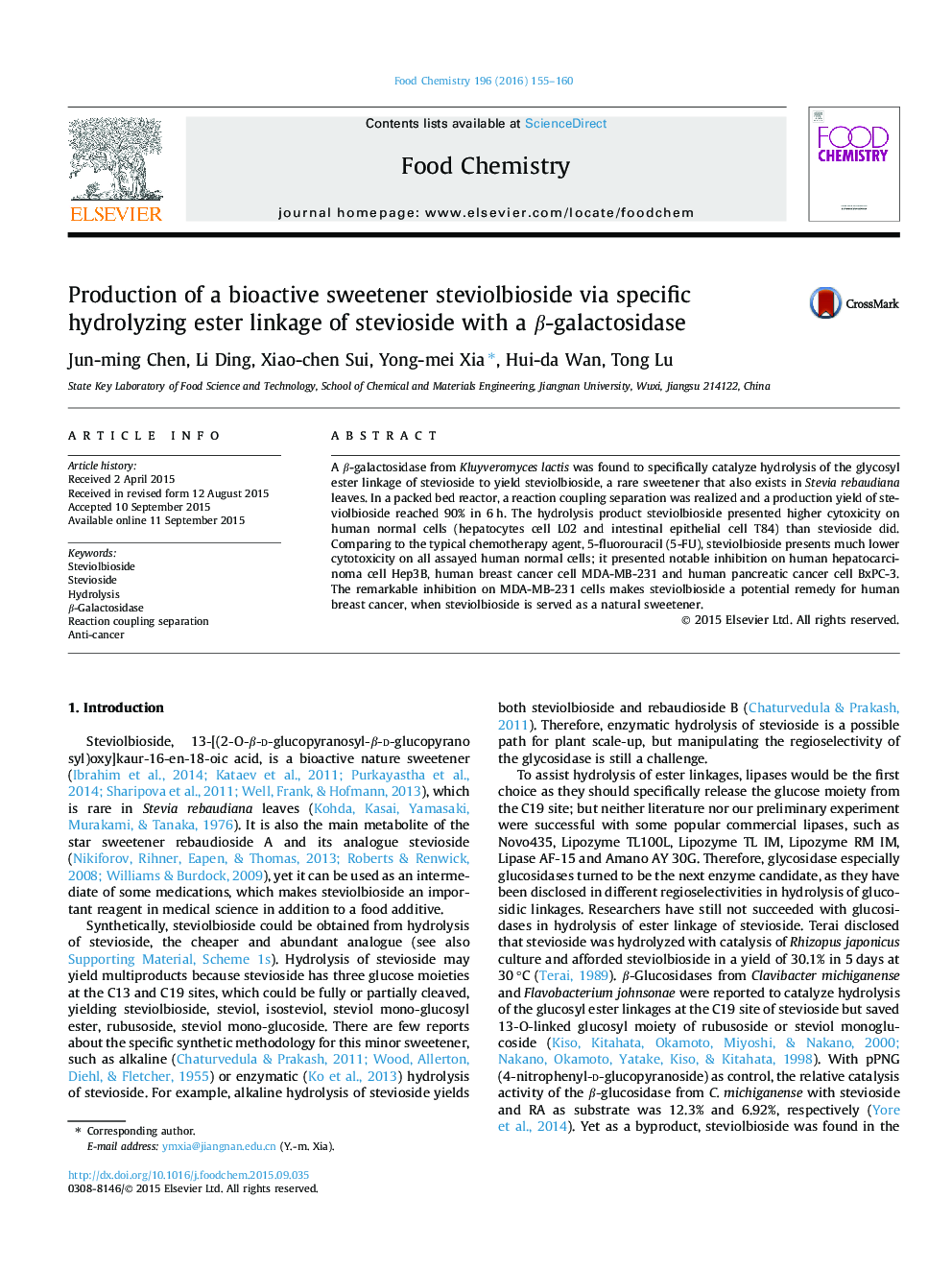| کد مقاله | کد نشریه | سال انتشار | مقاله انگلیسی | نسخه تمام متن |
|---|---|---|---|---|
| 1184138 | 1492095 | 2016 | 6 صفحه PDF | دانلود رایگان |

• The β-galactosidase catalyzes specific hydrolyzing stevioside to steviolbioside.
• Reaction coupling separation was realized in a packed bed reactor.
• Steviolbioside inhibits human breast cancer cells as a natural sweetener.
A β-galactosidase from Kluyveromyces lactis was found to specifically catalyze hydrolysis of the glycosyl ester linkage of stevioside to yield steviolbioside, a rare sweetener that also exists in Stevia rebaudiana leaves. In a packed bed reactor, a reaction coupling separation was realized and a production yield of steviolbioside reached 90% in 6 h. The hydrolysis product steviolbioside presented higher cytoxicity on human normal cells (hepatocytes cell L02 and intestinal epithelial cell T84) than stevioside did. Comparing to the typical chemotherapy agent, 5-fluorouracil (5-FU), steviolbioside presents much lower cytotoxicity on all assayed human normal cells; it presented notable inhibition on human hepatocarcinoma cell Hep3B, human breast cancer cell MDA-MB-231 and human pancreatic cancer cell BxPC-3. The remarkable inhibition on MDA-MB-231 cells makes steviolbioside a potential remedy for human breast cancer, when steviolbioside is served as a natural sweetener.
Journal: Food Chemistry - Volume 196, 1 April 2016, Pages 155–160